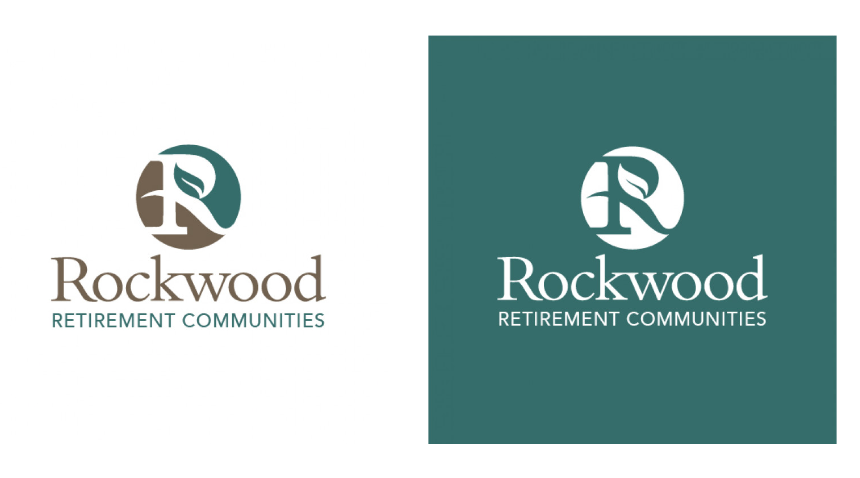9.23.20 | read time: 11 min
10 Things To Know About Media In 2020
116 & West
Most of us have taken the pledge to erase 2020 from our collective memory as soon as the ball drops on New Year’s Eve. However, as much as we’d all like to just pretend the suckfest of 2020 never happened, it’s important to recognize the impact it’s had on our industry. What’s happened this year in media advertising may have a ripple effect that causes lasting change.
So, instead of crawling under a nice rock and waiting until 2021 to come back out again, we took a little time to look at our surroundings. What we found is not only interesting but also hugely beneficial to how we advise our clients and how we will prepare for upcoming years.
Check it out below. If you have something to add or want to chat about your company’s place in it all, email us: whatsup@116andwest.com.
1. Hulu Wins
We’ve been sitting at home a lot more than usual this year (thank you, COVID). That means streaming television and movies have been on the rise. HBO, Netflix, and Amazon Prime are ad-free spaces, but Hulu allows for ads—hooray for us! Even better, this year Hulu has seen an increase of 18% of more viewers every single day. Hulu has more than 30 million subscribers compared to last year, and their viewing is up 48%. Hulu also released their NewFront, which is all FX programming. Yes. We said “wins” for a reason.
We were a little worried about HBO’s new platform, HBO Max. The rollout was not clear and the platform itself was confusing. This turned out to be a good hiccup for us as advertisers because it didn’t pull a lot of viewers away from ad-supported streaming.
Aside from Hulu, Pandora is also seeing its numbers grow. According to a Pandora Study conducted at the beginning of the pandemic, they saw a 45% increase in listeners activating music on a smart/connected device. The study also showed that time spent on Pandora has gone up week over week, on weekdays and weekends.
These growing numbers are good news for those of us in the ad world.
2. Print Goes Digital
The reverse, however, has happened to print. With fewer places open, fewer people out, and less distribution availability, ad revenue for print has taken a nosedive. On the upside, digital news subscriptions have skyrocketed. The New York Times saw nearly 600,000 new subscribers during the first 3 months of COVID-19 and their numbers are still continuing to rise. According to a MediaPost article, “Digital Publishers with more than 25,000 subscribers experience the highest growth in March at 5.8%. Publishers with 2,500 to 10,000 readers saw the slimmest gain at 1.2% according to Mathers research.”
If you’re in advertising, it’s essential to keep this in mind. You might not be reaching anyone if you’re buying print ads via a physical newspaper, but placement on news sites may become more and more popular as subscription numbers continue to rise.
3. BLM vs. Facebook
In late Q2 and into Q3, the Black Lives Matter movement grabbed social media by the shoulders, and shook it. According to Business Insider, civil rights organizations including NAACP, Color of Change, Anti-Defamation League, and Sleeping Giants asked advertisers to stop paying for advertisements on Facebook in the wake of George Floyd’s murder.
Moreover, in light of Zuckerberg’s inaction of monitoring hate-speech on Facebook, more than 40 major brands across a variety of industries, including Coca-Cola, Starbucks, Unilever, Verizon, Ford, Ben & Jerry’s, Denny’s, and The North Face halted their paid advertising on Facebook. Over 500 companies followed suit by pausing Facebook spending during July.
While large advertisers publicly proclaim they will not use Facebook, small- and medium-sized businesses—which account for 3/4 of Facebook’s advertising revenue—are facing a troublesome dilemma because Facebook is a high-converting tactic.
The BLM movement has changed the way people share on social media. Many large brands chose to pull ads on social media and vowed to mute their accounts for a week to allow more space for black voices to be heard.
An article on ABC.com stated: “A 2019 survey found 74 percent of consumers think brands should take a stand on issues such as climate change. And data released last month showed that even if speaking up on issues like Black Lives Matter is politically divisive, most people agree it’s worse to say nothing at all.”
4. Google Gives Back
Google has always been a consistently great ad platform. However, when COVID-19 hit, Google saw conversion rates drop by an average of 21% across all industries, according to WordStream.
Because of these lower conversion rates, Google announced they would give $340M in ad credits for small- to medium-sized businesses who use Google Ads. Globally, small- and medium-sized businesses who have spent with a Google Ads account in ten out of twelve months of 2019, and in January and/or February of this year, qualify for the Google Ads credit.
According to a study from IAB, digital spend for the March-to-June period will be down 33%. Although the spend is down, Google has been seeing new trends in consumer behavior. For those using Google Ads, it’s imperative to pay attention to the following:
- An uptick in searches and impressions at night.
- Misleading content in many of the keyword volumes has increased, which is causing confusion in some campaigns.
- Consumers are paying attention to how companies respond to COVID-19. According to one survey, 84% of US consumers say how companies act during the current situation will affect their loyalty moving forward.
5. Yay For Sports
Broadcast television is having a difficult time competing with streaming television platforms. Most television channels have incomplete fall schedules, unconfirmed premiere dates, and unbooked fall programming. Streaming platforms, on the other hand, will release lots of new content and will be relatively free from expensive political ads that take up a lot of space.
The COVID-19 pandemic has also caused a hole in broadcast television’s ad space: college sports cancellations. The Big 10, Pac-12, Mid American Conference, and Mountain West Conference have all canceled or postponed their football season until the spring. As of yet, the SEC and ACC have not announced cancellations. All the ad revenue for college football will be shifted to NFL (in hopes they don’t cancel,) and to other sports that usually wouldn’t be first priority: Golf, NBA, NHL, and even MLB.
According to Adweek, Fox Sports stated that they have sold more than 90% of their MLB regular season ad inventory. This could be a reflection of reduced prime time television, and the high anticipated demand for live sports. Even with some sports on-air, national ad spending on sports has fallen over 60% compared to 2019—most of it due to the cancellations of March Madness and college football.
6. Terrestrial Radio Still Lives
Although stay-at-home orders are still relevant in some communities, businesses are starting to transition back to their regular office hours. As that happens, and people start going back to their normal morning and evening commutes, radio listenership will start to increase again. As sports continue to happen (fingers crossed), so will sport talk radio, which is a big deal for listeners and advertisers.
While radio continues to be a good platform for advertising, it’s important to keep in mind the idea of “news burnout.” Some people have been avoiding the news altogether because, well, it’s always bad. “News Burnout” may result in the increase of audio streaming and local news radio, while national sources may take a back seat.
7. eCommerce > Everything
According to Forbes, the pandemic has forced thousands of businesses to embrace technology and move online. Shoppers in some areas are hesitant to return to their everyday habits. Filling a room for a book reading or exercise class still just isn’t in the cards for many people.
The Washington Post explains small businesses are hoping that a transition to online sales might help keep them afloat as they prepare to reopen. According to research firm eMarketer, sales at physical stores in the U.S. will drop 14 percent, or $4.2 trillion, this year, and it could take five years for the industry to bounce back completely. Online sales, while up, aren’t enough to make up for that huge loss. This could leave hundreds of small to medium businesses struggling, while corporations such as Walmart and Amazon continue to rake in the cash.
8. The Election, Misinformation, and New Policies
It’s an election year. Not counting the, uh, turmoil that comes with it, advertisers have to be prepared for the social media ad space to be taken up with political ads. If Facebook doesn’t clean up misleading information that played out during the 2016 election, some major brands are likely to extend their pause in advertising on the platform.
Market Watch estimates that Facebook could collect hundreds of millions of dollars from political ads between now and November 3rd. In last year’s third-quarter earnings call, Chief Executive Mark Zuckerberg estimated ads from politicians to be “less than 0.5% of our revenue next year.” This would be about $400 million, based on FactSet analysts’ forecast of $77.4 billion in revenue
Unlike Facebook, Twitter has worked diligently to redefine its policies regarding “manipulated media” and “deep fake” videos, announcing a new standard for tweets from world leaders that contain false and potentially dangerous information. Twitter solicited input from thousands of users and concluded that most people want problematic posts to be hidden or labeled—not removed,“ (CNN News).
Twitter has also released a “civic integrity policy” in May. According to CNN News, “The rules say, in part, that users ‘may not use Twitter’s services for the purpose of manipulating or interfering in elections or other civic processes.’” The company said this includes “posting or sharing content that may suppress participation or mislead people about when, where, or how to participate in a civic process.”
9. Cyber Monday is Coming
Thanksgiving and Christmas will be huge for online shopping in Q4. One of the biggest days of the year for search/display advertising is “Cyber Monday.” In 2019, Cyber Monday was the heaviest online spending day in history, jumping 19.7% to $9.4 billion, according to Adobe. Black Friday posted a similarly strong gain that year at 19.6%, reaching $7.4 billion as the second-heaviest day of the season, followed by Thanksgiving’s 14.5% increase to $4.2 billion.
If you’re in the biz, you already know that if you haven’t already started prepping for the holidays, you’re behind.
10. TikTok, Babe
With over 800 million monthly active users, businesses can’t ignore TikTok advertising, especially if you’re looking to reach users under the age of 30. According to HootSuite, with 800 million monthly active users, TikTok beats LinkedIn (660+ million), Reddit (430+ million), Snapchat (218+ million), Twitter (340+ million), and Pinterest (322+ million).
TikTok ads are supposed to feel organic and tailored to the platform. You can activate interactivity by creating challenges, coming up with unique sounds, and using unique hashtags for campaigns. TikTok can reach audiences in 150+ countries and counting. You can target specific audiences and track performance in real-time. However, we have yet to see if there is an option to target on the local level while the platform is still in the early phases.
TikTok offers several options for advertisers to reach their target demographic:
-
- In-Feed Video: Ads appear in the native news feed of TikTok on the For You page.
- Brand Takeover: Ad appears when TikTok users open the app and completely take over the screen for a few seconds before turning into an In-Feed Video ad.
- Hashtag Challenge: Ad appears on the Discovery page. It encourages users to participate in user content creation challenges. These can include a shoppable component for retailers.
- Branded AR Content: Ad appears as branded lenses, stickers, and other 2D/3D/AR content for TikTok users to use in their videos.
- Custom Influencer Package: Ad appears as part of sponsored content created by a TikTok user with influence in your market.
Possible Tik Tok Ban?
While TikTok is obviously a worthwhile endeavor, it hasn’t been without controversy. On July 31, President Trump announced that he was working to ban TikTok as soon as August 1 over concerns of US citizens’ information being stored in China. Despite those claims, the platform is still alive and well in the US. According to a recent Washington Post article, the U.S. could ban TikTok if an American company doesn’t buy it. This ban could occur as quickly as September 20th.
After Trump’s announcement TikTok U.S. General Manager Vanessa Pappas, stated in a video released August 1st directly to TikTok “We’re not planning on going anywhere, I want to thank the millions of Americans who use TikTok every day, bringing their creativity and joy into our daily lives, we’ve heard your outpouring of support and we want to say thank you.”
Also on August 1st, Microsoft confirmed speculation that they are in talks to purchase TikTok. According to The Washington Post, this is the first time Microsoft has confirmed that the company is in talks for Microsoft to purchase TikTok operations in the United States, Canada, Australia, and New Zealand. Microsoft confirmed it will “move quickly, within the next three weeks” on discussions with ByteDance (TikTok’s parent company) and said it has given the U.S. government notice of a possible acquisition of the U.S. assets of TikTok. The deal could be worth up to $30 billion.
The deal, however, has been halted due to new Chinese regulations, according to CNET. It is unclear if they will release Tik Tok’s algorithm to potential buyers. Without the algorithm, buyers are rethinking their bids since they won’t have the technology that makes this app the success of what it is.
The latest? President Trump set a new sale deadline of November 12th.
Is It Over Yet?
Unfortunately, 2020 is still hanging around for a few more months. Although we don’t know exactly what the future holds, we can at least know that the requirements of advertisers to be nimble and responsive won’t change. We need to do the best work we can no matter what’s on television, playing on the radio, or streaming.





